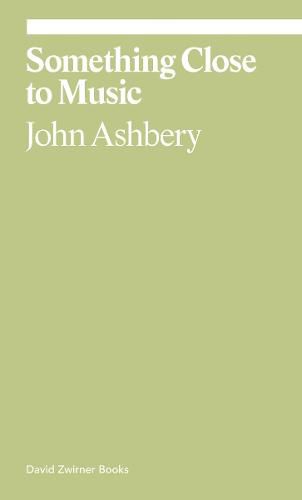Readings Newsletter
Become a Readings Member to make your shopping experience even easier.
Sign in or sign up for free!
You’re not far away from qualifying for FREE standard shipping within Australia
You’ve qualified for FREE standard shipping within Australia
The cart is loading…






This book places poetry by Ashbery (1927-2017), gathered from his later collections, in conversation with a selection of contemporaneous art writing. In addition, as Ashbery loved music and listened to it while writing, the playlists here offer representative samplings of music from these same years, culled from Ashbery’s own library of recordings.
Ashbery’s poetry is frequently described as ekphrastic, though, rather than writing a poem based on’‘ or inspired by the content of an artwork of or piece of music, he engages with how the experience of seeing it and the artistic strategies employed offer ways of thinking about it and through it. Many of the observations from Ashbery’s art writing also offer keys to how we might read his poetry.
Many of the recordings he listened to feature contemporary classical works that emphasize complex textures, disparate sounds, and disjunct phrases. Ashbery’s poetry similarly plays with a diversity of poetic textures and sudden turns such that a reader might construct multiple narratives or pathways of meaning. He rarely offers linear stories or focuses on evocative descriptions of a scene or object.
In exploring this ekphrastic book project, the reader is invited to discover how, for Ashbery, these three forms might illuminate and inform one another.
$9.00 standard shipping within Australia
FREE standard shipping within Australia for orders over $100.00
Express & International shipping calculated at checkout
This book places poetry by Ashbery (1927-2017), gathered from his later collections, in conversation with a selection of contemporaneous art writing. In addition, as Ashbery loved music and listened to it while writing, the playlists here offer representative samplings of music from these same years, culled from Ashbery’s own library of recordings.
Ashbery’s poetry is frequently described as ekphrastic, though, rather than writing a poem based on’‘ or inspired by the content of an artwork of or piece of music, he engages with how the experience of seeing it and the artistic strategies employed offer ways of thinking about it and through it. Many of the observations from Ashbery’s art writing also offer keys to how we might read his poetry.
Many of the recordings he listened to feature contemporary classical works that emphasize complex textures, disparate sounds, and disjunct phrases. Ashbery’s poetry similarly plays with a diversity of poetic textures and sudden turns such that a reader might construct multiple narratives or pathways of meaning. He rarely offers linear stories or focuses on evocative descriptions of a scene or object.
In exploring this ekphrastic book project, the reader is invited to discover how, for Ashbery, these three forms might illuminate and inform one another.